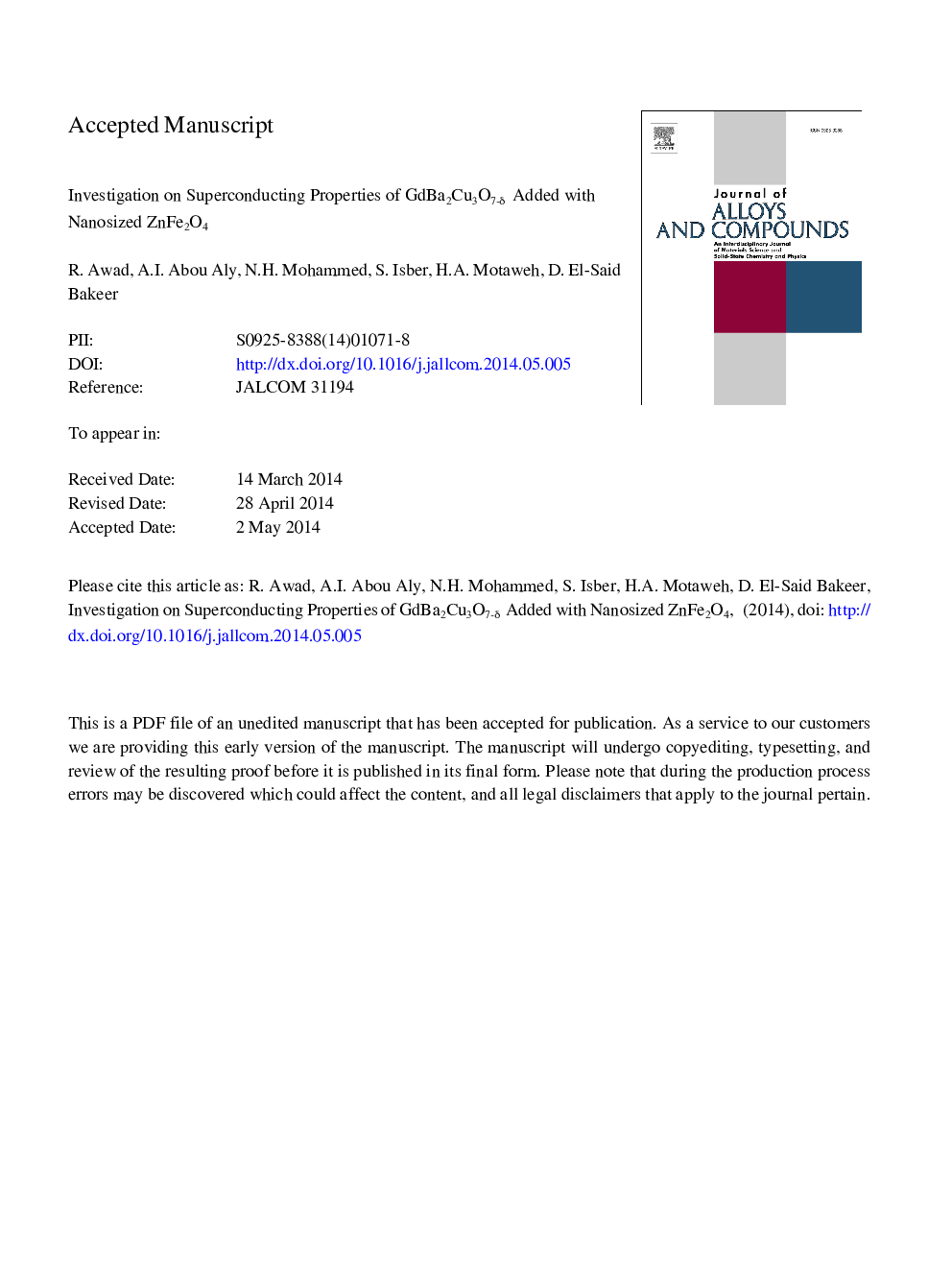| Article ID | Journal | Published Year | Pages | File Type |
|---|---|---|---|---|
| 8002069 | Journal of Alloys and Compounds | 2014 | 29 Pages |
Abstract
The effect of nanosized ZnFe2O4, prepared by Co-precipitation method, on GdBa2Cu3O7âδ superconductor was studied. Therefore, superconducting samples of type (ZnFe2O4)xGdBa2Cu3O7âδ, 0.0⩽x⩽0.1 wt.%, were prepared by the conventional solid-state reaction technique. Moreover, nanosized ZnFe2O4 was characterized using X-ray powder diffraction (XRD), transmission electron microscope (TEM) and magnetic hysteresis measurements. The results revealed that a nanosized ZnFe2O4 was achieved with average grain size 9 nm and a super-paramagnetic hysteresis. On the other hand, the superconducting samples were characterized and investigated through XRD, scanning electron microscope (SEM), electrical resistivity, ac magnetic susceptibility and Vickers microhardness. XRD results showed that the volume fraction of Gd-123 phase increases as x rises from 0.0 to 0.06 wt.% while the SEM results showed that the grain connectivity between the grains increases with increasing x. The superconducting transition temperature Tc, determined from electrical resistivity and ac magnetic susceptibility, increases up to x = 0.06 wt.%, and then it decreases. Moreover, electric field-current density (E-J) characteristic curves were measured at 77 K. An improvement of the critical current density was obtained with x increase up to 0.06 wt.%. Furthermore, the Vickers microhardness data were analyzed using Meyer's law, Hays-Kendall approach, elastic/plastic deformation model and proportional specimen resistance model. The results indicated that Vickers microhardness number HV increases as x increases and it exhibits a normal indentation size effect. Moreover, the proportional specimen resistance model is found to be the best model to verify the experimental load independent Vickers microhardness values.
Related Topics
Physical Sciences and Engineering
Materials Science
Metals and Alloys
Authors
R. Awad, A.I. Abou Aly, N.H. Mohammed, S. Isber, H.A. Motaweh, D. El-Said Bakeer,
